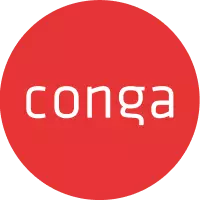
How medtech companies can accelerate revenue growth with advanced CPQ and RLM solutions

Did you know that MedTech companies with advanced Configure Price Quote (CPQ) systems achieve revenue growth 1.4x faster than their competitors? In 2025, mastering the art of pricing and quoting is no longer optional—it is often your competitive edge. In this blog series, PwC and Conga highlight key trends in the MedTech industry that can offer opportunities for those who seize them and risks for those who fail to act.
We will also consider how modern Revenue Lifecycle Management (RLM) software can help MedTech companies deliver increased revenues and margins, speed up the deal process, decrease errors, and enhance the buying experience.
How strong commercial capabilities drive MedTech growth
Recent analysis points to a growing chasm between those with industry-leading commercial capabilities and the rest of the market [1].
Medtech companies with poor commercial capabilities, particularly in RLM, are sacrificing revenue and seeing below-average margin growth. In contrast, companies with more advanced commercial capabilities enjoy a Compound Annual Growth Rate (CAGR) approximately 1.4 times higher than those with less developed commercial capabilities.
This stark reality is the result of several converging forces.
MedTech revenue & margin trends: risks and opportunities
As healthcare costs continue to escalate, many MedTech companies are expected to provide affordable products that still meet the quality standards required by patients and healthcare providers. Meanwhile, their own costs are steadily rising.
The combined impact of broken supply chains, residual inflation, and high interest rates has intensified margin pressures on MedTech companies. Without sufficient budgets for R&D, traditional MedTech companies often struggle to capitalize on opportunities to innovate (for example, by developing and monetizing AI capabilities).
Regional collaboratives and group purchasing organizations continue to add to the capital and profit-and-loss (P&L) constraints in health systems, further increasing pricing pressure.
Meanwhile, the commoditization of traditional MedTech categories continues, and digital-first newcomers with newer business models and alternative pricing constructs that can expand their dominance in high-growth areas like digital health devices and robotics.
Customers’ growing expectations for remote, digital, and omnichannel engagement and self-service options also play a role. Physicians, hospital procurement teams, health system administrators, technicians, and others who purchase MedTech devices increasingly seek frictionless, personalized, and on-demand sales experiences.
Before the pandemic, many MedTech sales conversations occurred in person at hospitals, clinics, and doctors’ offices. During the pandemic, in-person selling shifted primarily to virtual engagements. While buyers’ preference for in-person meetings with MedTech sales reps has slightly rebounded, it remains well below pre-pandemic levels. A recent study showed that up to 60% of HCPs prefer digital, self-service, or remote engagement when researching unfamiliar technologies, requesting proposals, and purchasing products [2].
The fact that many buyers of MedTech devices and services continue to struggle with labor shortages—and thus have fewer resources and less time to evaluate products—further intensifies the demand for more self-service, remote buying experiences.
To help close more sales and grow their margins, MedTech companies should become more agile and flexible in engaging with buyers and prospects and embrace a multichannel sales approach.
Exploring the complex CPQ world of medical device sales
MedTech devices, including hospital and lab equipment, are intrinsically complex and are becoming more complex each year. Devices vary in size and design and include advanced accessories and connectivity features. For sales teams, confirming each proposal is precise and clear to the individuals involved—and delivered in a timely manner—can be an ongoing and uphill battle.
Clear-cut pricing
Today, setting the ideal price for products or services can be an integral task that helps significantly influence your profitability, market share, and long-term success. However, implementing different pricing structures while accommodating variables such as bundled equipment costs and attached services like maintenance, training, services, warranties, and discounts can be both time-consuming and fraught with complexity.
Medtech sales teams also need to pay attention to factors such as discounting rebates and capital equipment disposal. They should also consider clinical requirements, configure highly customized solutions, and set more ideal price points for new devices.
New business models and alternative pricing arrangements
Today, traditional commercial constructs are coming under scrutiny, and more MedTech buyers are leaning toward value-driven contracting approaches, such as subscription-based, outcomes-based, price-per, or as-a-service models.
At the same time, changes in regulatory policy that favor value-based care are often increasingly tying procurement and purchasing decisions to health outcomes. Many MedTech companies are now sharing risk with buyers under new gain-sharing models and outcome guarantees.
External ecosystem complexity and blind spots
MedTech CPQ management can also be difficult due to an increasingly complex healthcare ecosystem of integrated delivery Networks (IDNs) and affiliates, group purchasing organizations (GPOs), and regional purchasing coalitions (RPCs). This situation is expected to become even more complex as IDNs are projected to grow at a CAGR of 9.1% from 2024 to 2031 [3].
To help illustrate how ecosystem complexity can negatively impact the CPQ process, consider this hypothetical scenario: After several months of negotiations, a MedTech manufacturer’s defibrillator finally gets approved for use at a large city hospital. Unfortunately, due to a lack of visibility, sales teams in other regions do not realize the hospital is associated with dozens of regional facilities, so the approval effectively applied to the entire hospital system. As a result, they inadvertently underutilized the contract they had secured.
If they had a central process and system in place, they would have known they did not have to negotiate with each facility individually and would have leveraged the existing deal to save time and grow sales.
Navigating CPQ complexity in MedTech sales
Government pricing programs, such as CMS’s New Technology Add-on Payment (NTAP) program, add a further layer of complexity to MedTech sales. NTAP is a program that provides extra payments to hospitals for using recent technologies. Its goal is to encourage hospitals to adopt recent technologies that help improve patient outcomes but are not adequately covered by existing reimbursement rates. However, the NTAP payment is limited to 65% of the technology's costs or 65% of the amount by which the costs exceed the standard MS–DRG payment [4].
Let us consider how this can complicate the CPQ process: A MedTech manufacturer develops a new MRI machine that delivers significantly improved image quality due to stronger magnetic fields, faster scanning times, enhanced software algorithms, and wider bores, making it more comfortable for patients. They will likely want to sell the new model at a premium. However, under the NTAP program, Medicaid will only reimburse hospital customers up to 65% of the price increase. In this scenario, the MedTech company would either end up selling their product at a loss or need to come to an arrangement with their hospital customer to split the difference.
How RLM simplifies CPQ for MedTech
Advancements in automated RLM software helps give sales teams the ability to configure, price, and generate highly efficient quotes for MedTech products and services and can also help close deals faster:
- Configure: Users select products and configure them based on customer requirements.
- Price: RLM solutions automatically calculate prices based on discounts, custom pricing, currency conversions, and other pricing rules.
- Quote: Sales teams generate professional, branded quote documents and send them directly to customers.
With a centralized digital platform, MedTech companies are well-placed to help drive revenue and margin because sales teams can:
- Manage complex product configurations
- Confirm the ideal pricing/rebates and up-to-date product information
- Enforce compliance and observe industry regulations
- Increase prices through deal guidance and price segmentation
- Generate quotes faster
- Sell more products and increase order volumes through cross-selling and upselling recommendations
- Increase win rates through targeted pricing and offerings and improved cycle times
CPQ in action: overcoming CPQ complexity to secure a major contract
Challenge: MedTech manufacturers frequently encounter significant obstacles when pursuing contracts with Integrated IDNs and GPOs. These deals often involve intricate rebate agreements tied to volume thresholds, bundled pricing structures, and multi-facility configurations spanning numerous healthcare facilities.
One common challenge arises from misaligned pricing eligibility rules between GPOs and IDNs, requiring extensive cross-referencing to confirm compliance. Adding to this complexity, tight proposal deadlines imposed by buyers can strain sales teams already managing manual, spreadsheet-based processes. Errors or delays in responding to these demands can risk jeopardizing the opportunity and can result in significant revenue loss.
Solution approach: To address these recurring challenges, MedTech companies are increasingly turning to advanced CPQ solutions embedded within broader RLM platforms. These technologies allow sales teams to streamline and simplify their approach by:
- Centralizing GPO and IDN pricing rules into a unified system to validate eligibility quickly and accurately.
- Automating rebate calculations to confirm compliance with volume-based thresholds and other contract-specific terms.
- Configuring tailored proposals for multi-facility agreements, with built-in intelligence to handle complex pricing structures seamlessly.
- Generating professional, error-free quotes in hours instead of days, significantly reducing turnaround times.
Results achieved: MedTech companies that adopt such solutions often see dramatic improvements in their ability to navigate complex sales scenarios, including:
- Enhanced deal profitability through more precise alignment of rebate agreements and pricing structures with contract terms.
- Reduced errors and inefficiencies, as automation eliminates manual work and minimizes the risk of missteps in proposal preparation.
- Accelerated deal cycles, enabling sales teams to meet tight deadlines and present themselves as trusted, responsive partners to healthcare organizations.
This scenario exemplifies how advanced CPQ capabilities can empower MedTech manufacturers to overcome common obstacles, optimize their quoting processes, and improve their chances of securing high-value contracts in competitive markets.
AI’s expanding role in MedTech RLM
AI is redefining the way MedTech companies manage the CPQ process as part of a modern Revenue Lifecycle Management strategy. By automating complex configurations, pricing rules, and quote generation, AI-powered solutions allow sales teams to operate with greater speed and precision. These tools also can deliver actionable insights, helping companies align their pricing strategies with market conditions and customer-specific requirements—imperative for navigating the growing complexity of MedTech sales.
AI enhances decision-making by leveraging predictive analytics to help identify high-value opportunities and recommend tailored offerings. For instance, it can analyze historical customer data and behavioral trends to prioritize leads, suggest cross-selling or upselling options, and refine pricing for enhanced margins. These capabilities can not only streamline the sales cycle but also help teams focus their efforts where they are more likely to drive revenue growth.
Looking ahead, AI’s role in RLM is poised to expand further. As algorithms continue to evolve, they could deliver even greater precision in pricing recommendations, help MedTech companies proactively adapt to regulatory changes, and enable dynamic adjustments to sales strategies in real time. Companies that embrace these advancements can position themselves at the forefront of the industry, combining operational efficiency with the ability to deliver a seamless, customer-centric buying experience.
The future of MedTech sales: simplifying complexity with CPQ and AI
Complex products, evolving business models, and a multifaceted ecosystem mean mastering sales and building advanced commercial capabilities in the MedTech industry is often no easy feat.
The good news is that modern CPQ solutions, as part of an advanced RLM platform, offer a pathway to help simplify these complexities. By automating configuration, pricing, and quoting processes, these tools can give sales teams what they should have to navigate deal intricacies more efficiently, reduce errors, and enhance the overall buying experience. The ongoing integration of AI into CPQ solutions is set to revolutionize MedTech sales processes further, providing deeper insights and predictive capabilities that can drive new levels of efficiency and success.
As the industry continues to evolve, adopting these technologies can be essential for MedTech companies seeking to build their commercial competency, maintain a competitive edge, and enhance their revenue lifecycle.
Ready to streamline your CPQ process and unlock faster revenue growth? Discover how Conga's Revenue Lifecycle Management platform can help your MedTech business simplify complex sales, increase margins, and close deals faster. Learn more now.
© 2025 PwC US. All rights reserved. PwC US refers to the US group of member firms, and may sometimes refer to the PwC network. Each member firm is a separate legal entity. Please see www.pwc.com/structure for further details. This content is for general purposes only, and should not be used as a substitute for consultation with professional advisors.
[1] Patangay, A., & Meuer, M. (2024, June 11). Commercial capabilities: A predictor of growth for medtech companies. McKinsey & Company. https://www.mckinsey.com/industries/life-sciences/our-insights/commercial-capabilities-a-predictor-of-growth-for-medtech-companies
[2] Breuer, R., Zurkiya, D. N., Passmore, K., & Strom, M. (2023, March 28). How medtechs can meet industry demand for omnichannel engagement. McKinsey & Company. https://www.mckinsey.com/industries/life-sciences/our-insights/how-medtechs-can-meet-industry-demand-for-omnichannel-engagement
[3] Wani, G., & Faizullabhoy, M. (2023). U.S. Integrated Delivery Networks Market - by integration model (Vertical, Horizontal), service type (Acute care, long-term health), ownership type (Non-profit IDNs, for-profit IDNs), component (Hospital, ASCs, Health Clinic) – forecast, 2024-2032. In Global Market Insights Inc. https://www.gminsights.com/industry-analysis/us-integrated-delivery-networks-market
[4] New Medical Services and new technologies. CMS.gov. (2024, December 12). https://www.cms.gov/medicare/payment/prospective-payment-systems/acute-inpatient-pps/new-medical-services-and-new-technologies


